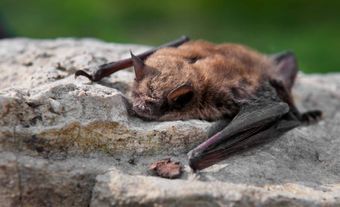
Sea Otter (Enhydra lutris), largest and most marine weasel, lives exclusively in shallow seas of the N Pacific, formerly from Japan to California. Ruthless hunting for their valuable pelts almost exterminated sea otters before 1900. A few survived in Alaska and California. Protection has permitted them to increase and reoccupy much of their former range. Transplants to SE Alaska and British Columbia have been successful.
Description
Males reach 1.6 m in length and 36 kg in weight; females about 3/4 of this. The body is long; tail and legs short. Forefeet are padlike and have sharp claws; hind feet are flippers and fully furred. The head is broad, flattish with small ears. The animal is dark brown, frequently with a whitish face. Fur so dense that water cannot penetrate provides insulation; there is no blubber.
Diet
Reproduction and Development
Although concentrated in June, some breeding occurs in all months; most births occur in summer. The single pup may be born ashore (Alaska) or at sea (California) and is nursed about 11 months. Pups are carried on the female's chest as she swims belly up. They are groomed frequently to maintain waterproofing. Females breed in alternate years. See also Endangered animals; Fur trade.

 Share on Facebook
Share on Facebook Share on X
Share on X Share by Email
Share by Email Share on Google Classroom
Share on Google Classroom



